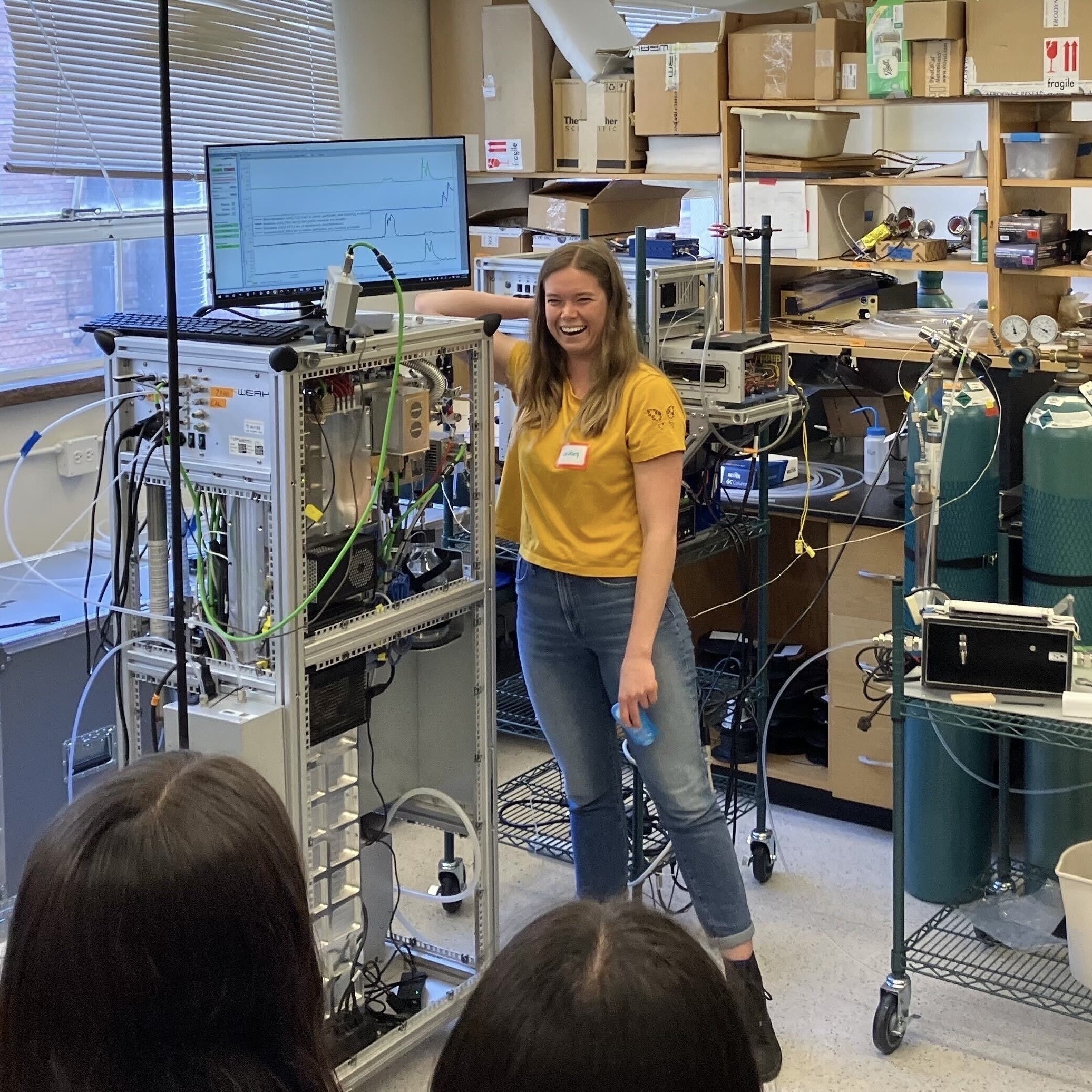
Lab Tour
Showed middle school students how our Vocus PTR ToF-MS works by showing the VOC peaks assocaited with nailpolish remover, an orange, and deodorant.
Wildfires are increasing in frequency and intensity across the western U.S., making it important to understand wildfire emissions and how they impact downwind air quality. It is challenging to collect daily field observations of the emissions from long-lived wildfires, but satellite remote sensing instruments facilitate daily monitoring of wildfires globally. In this study, we used satellite remote sensing observations to track how the chemical composition of wildfire emissions changes over time, as wildfires transition from mainly flaming to mainly smoldering combustion.
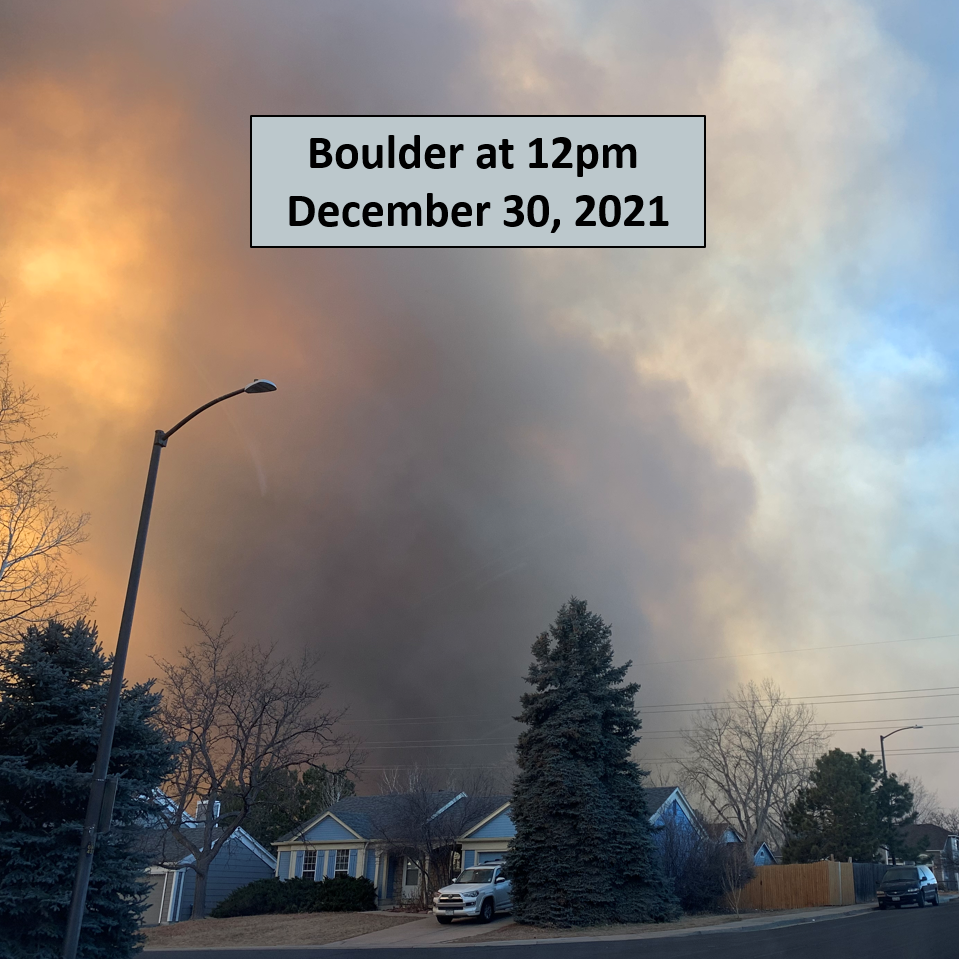
In this study, we present the use of the Hourly Wildfire Potential (HWP) index, which can predict the effects of changes in weather on wildfire activity. We combine this index with trace gas satellite observations, based on our prior findings, to parameterize how evolving combustion conditions impact the chemical composition of wildfire emissions. We implemented this parameterization in the High-Resolution Rapid Refresh model coupled to chemistry (HRRR-Chem), which is an experimental, high-resolution (3km x 3km), and convection allowing air quality forecasting model developed by collaborators at the National Oceanic and Atmospheric Administration (NOAA). Overall, we found that allowing parametrized changes in the chemical composition of wildfire emissions based on evolving combustion conditions led to an improved representation of atmospheric chemistry in wildfire plumes, allowing us to better predict their impact on air quality.
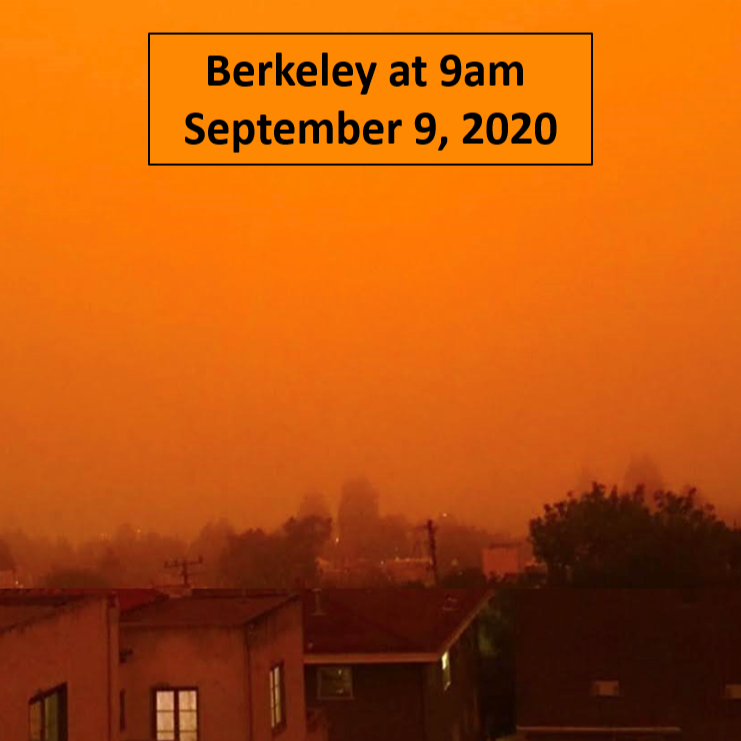
In this study, we investigate the relationship between high-resolution satellite observations and ground-level air quality, using six weeks of field observations we collected in Denver. Ongoing data analysis will investigate connections between satellite observations and ground-based observations of hydrocarbon oxidation, OH exposure, photochemical age, and the formation of secondary products, examining how these relationships change throughout the day.
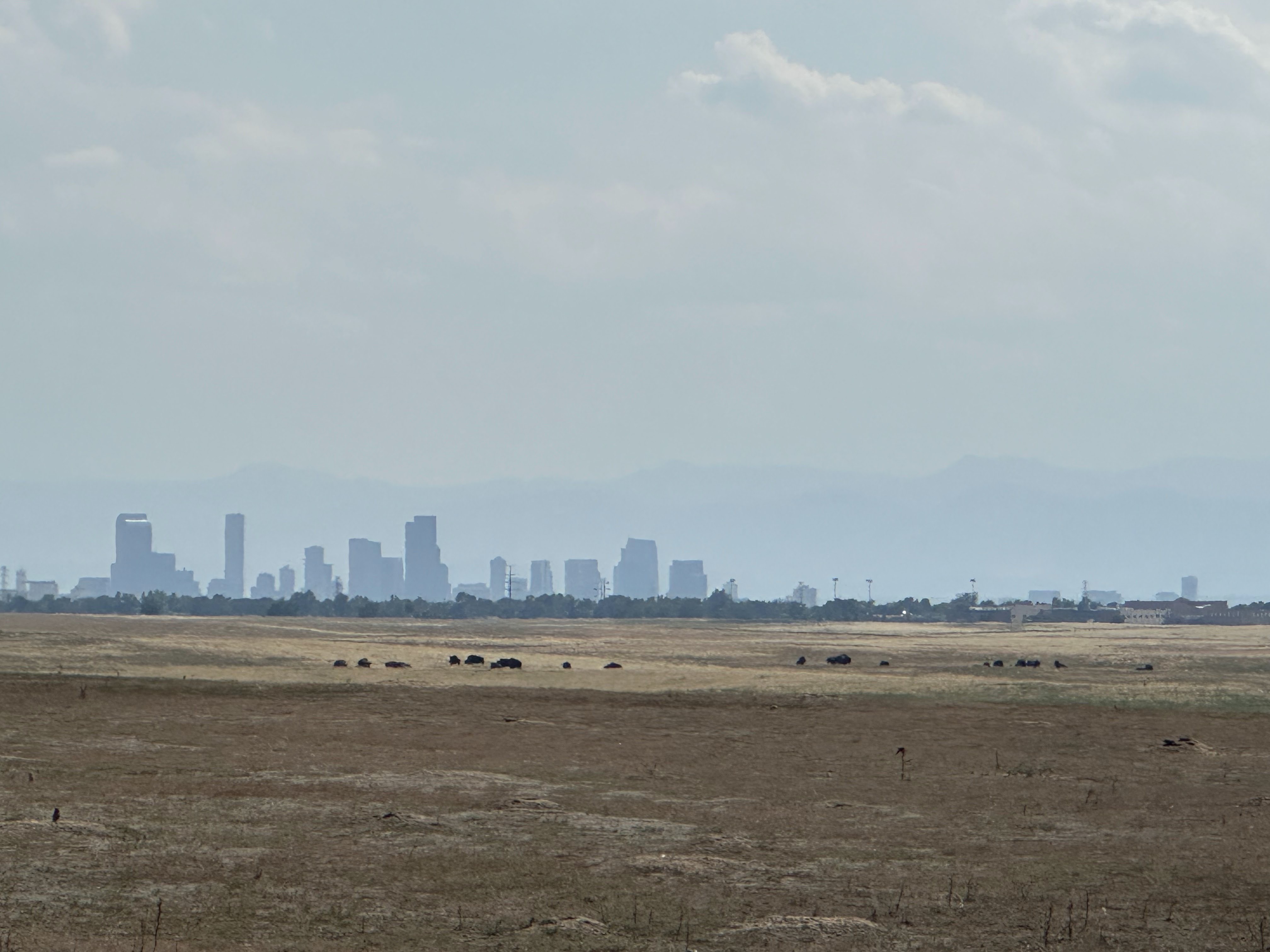
Over the past four years of my Ph.D. at CU Boulder, one of my most meaningful experiences has been my deep involvement with the PISEC program, where we visit the same classroom nearly 10 times each semester to build lasting connections with students. As a PISEC site leader, I lead a team of eight volunteers to spark curiosity through fun, inquiry-based science activities and to help students build strong science identities. For example, the photo on the right shows an activity from our electricity and magnetism curriculum, where we measure the induced current as we jump rope through Earth's magnetic field.
This past year, I designed the program’s first Chemistry-focused curriculum, creating 33 new activities across environmental chemistry, physical chemistry, biochemistry, and chemical engineering.
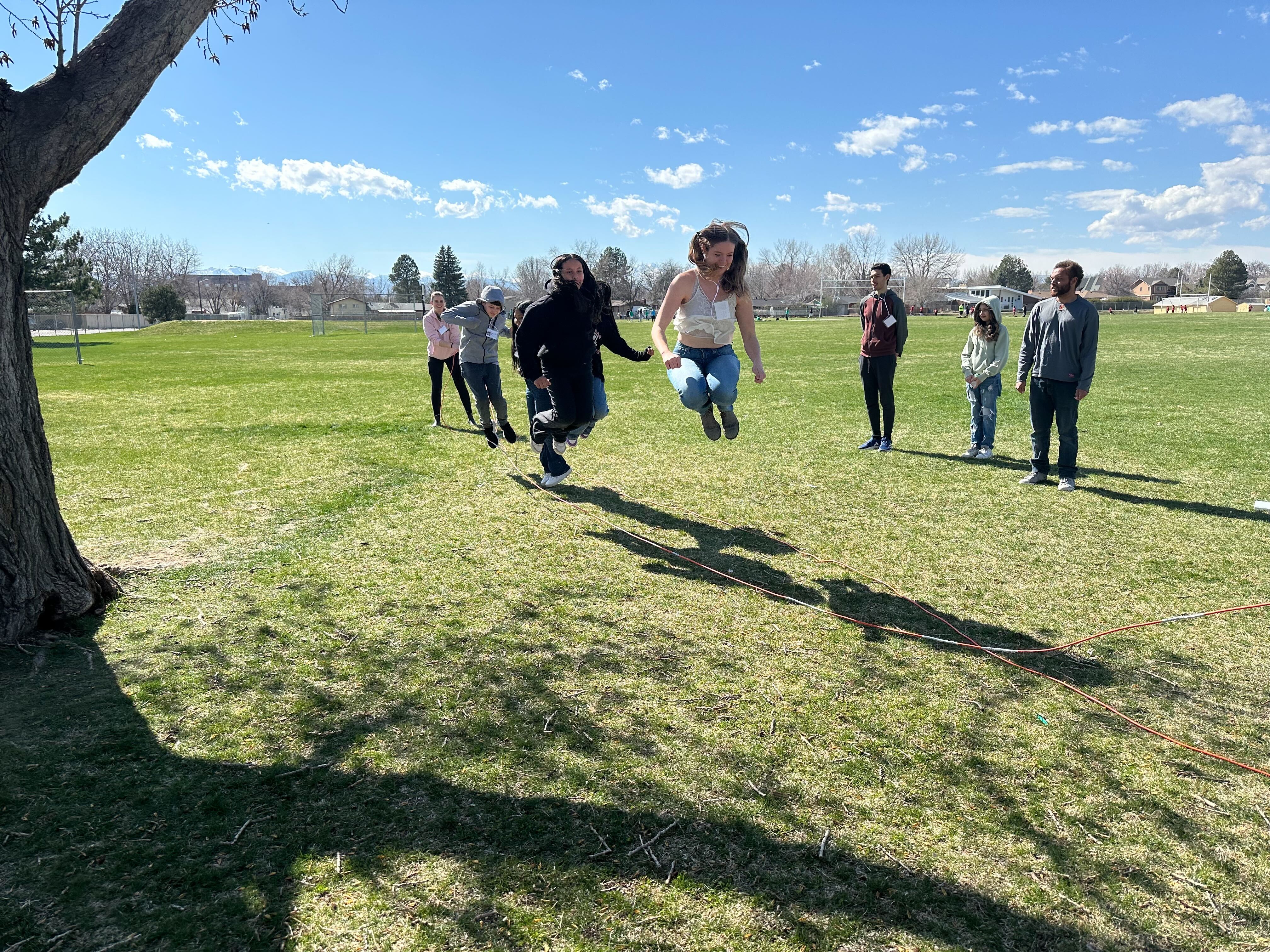
Anderson, L. D., Schnell, J. L., James, E., Romero-Alvarez, J., Ahmadov, R., Wang, S., Dix, B., Shingler, T., Hair, J., Campuzano-Jost, P., Jimenez, J. L., Perring, A. E., Hall, S. R., Ullmann, K., and de Gouw, J. A.: Examining the Effects of Parameterized Changes in the Chemical Composition of Wildfire Emissions on Forecasted Air Quality, J. Geophys. Res.-Atmos., Submitted, 2025. Preprint available at doi:10.22541/essoar.175199639.97566811/v1
James, E., Ahmadov, R., Romero-Alvarez, J., Grell, G. A., Csiszar, I., Anderson, L. D., Schnell, J. L., and de Gouw, J.: An hourly wildfire potential index for predicting sub-daily fire activity based on rapidly-updating convection-allowing model forecasts, WAF, doi:10.1175/WAF-D-24-0068.1, 2025.
Jensen, A., Morris, M., Schulze, B., Bradley, A., Anderson, L. D., Jenks, O., Dresser, W., Ball, K., Ward, R., Day, D. A., Crounse, J. D., Meinardi, S., Barletta, B., Blake, D. R., Seinfeld, J. H., Wennberg, P. O., Jimenez, J. L., and de Gouw, J. A.: Emissions and Chemistry of Volatile Organic Compounds in the Los Angeles Basin in Summer 2022, J. Geophys. Res.-Atmos., 129, e2024JD041812, doi:10.1029/2024JD041812, 2024.
Anderson, L. D., Dix, B., Schnell, J. L., Yokelson, R. J., Veefkind, J. P., Ahmadov, R., and de Gouw, J. A.: Analyzing the Impact of Evolving Combustion Conditions on the Composition of Wildfire Emissions Using Satellite Data, Geophys. Res. Lett., 50, e2023GL105811, doi:10.1029/2023GL105811, 2023.

Showed middle school students how our Vocus PTR ToF-MS works by showing the VOC peaks assocaited with nailpolish remover, an orange, and deodorant.
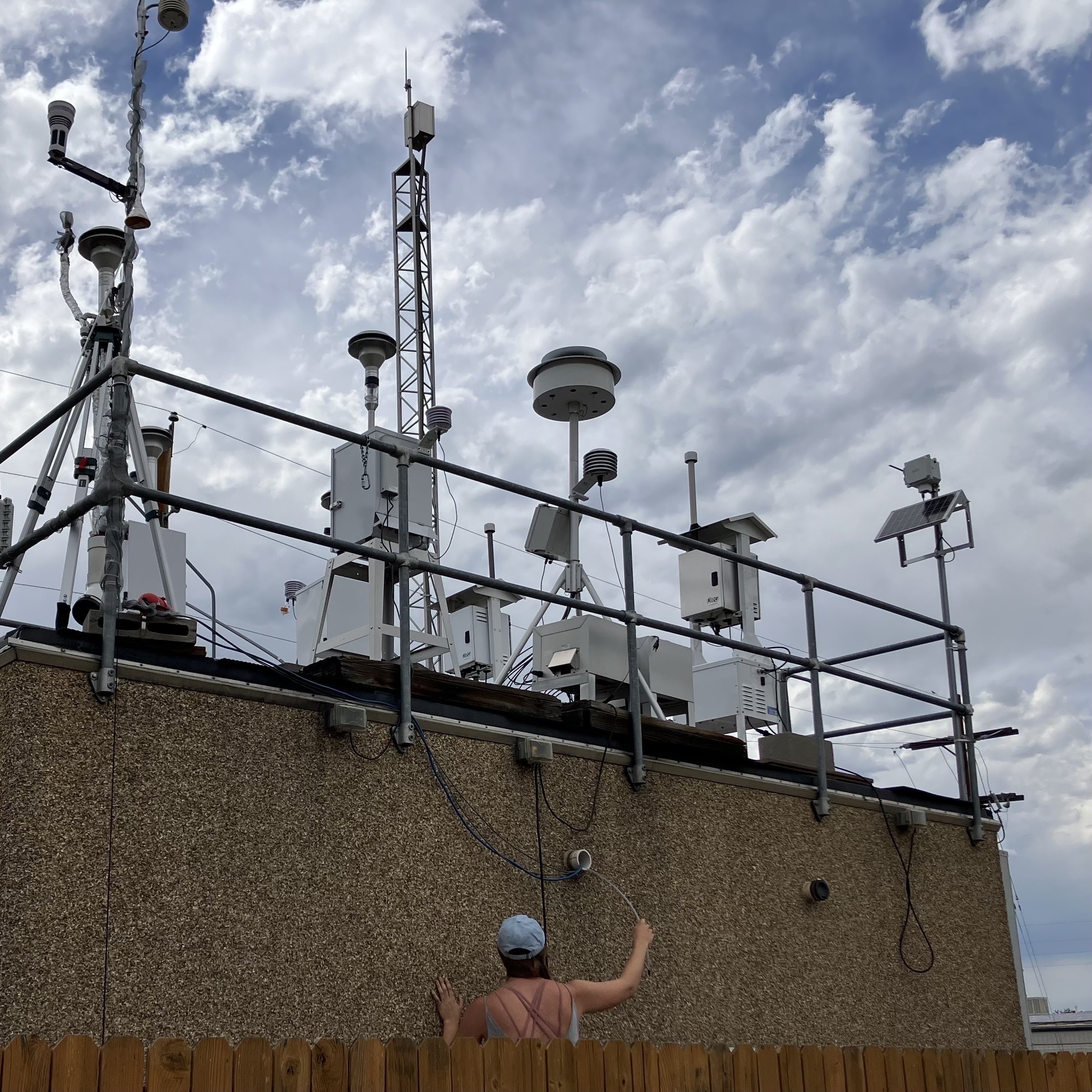
Setting up the exhaust line from the Vocus at the La Casa site during the Denvex Field Study (Summer 2024).
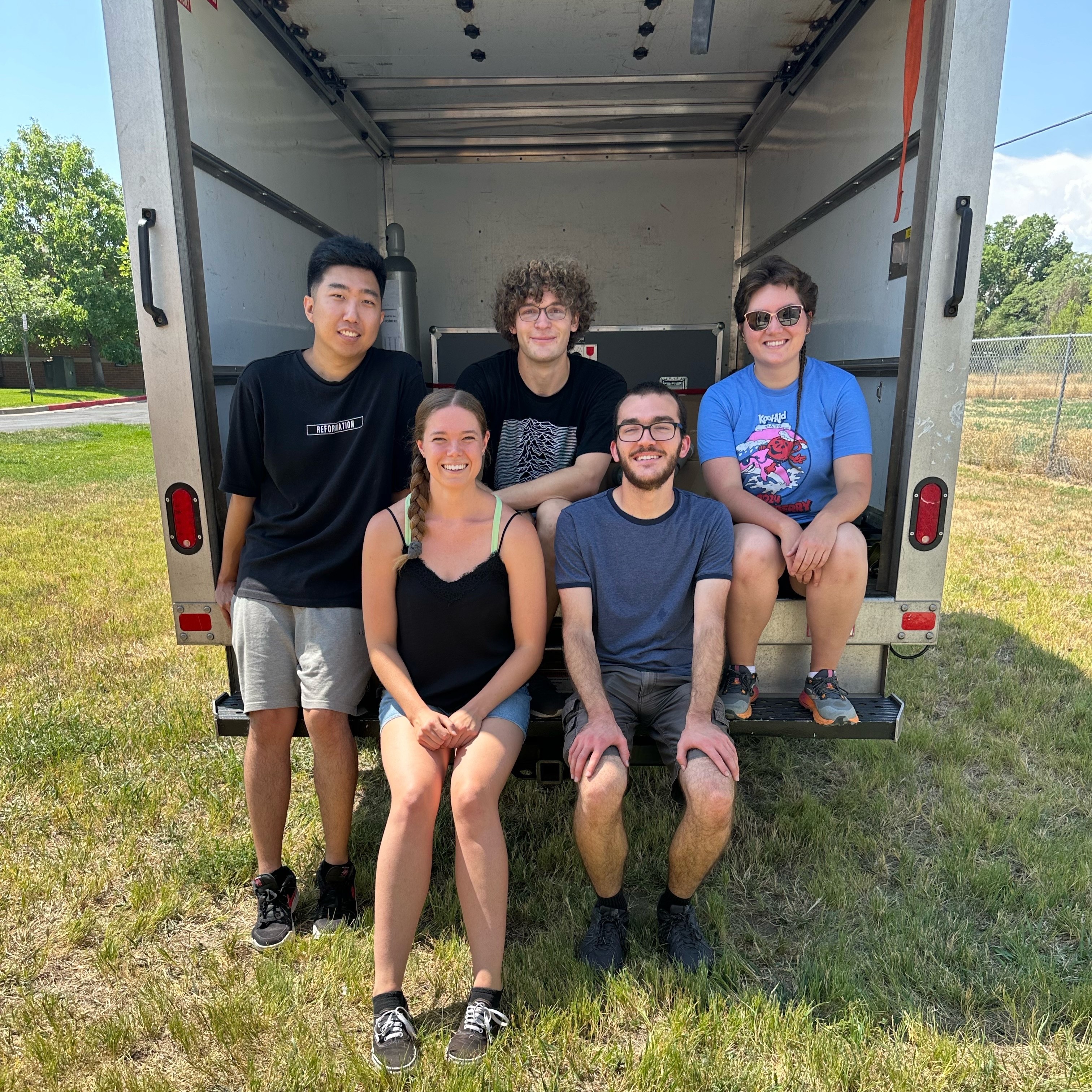
Packing up our instruments at the end of the Denvex field study.
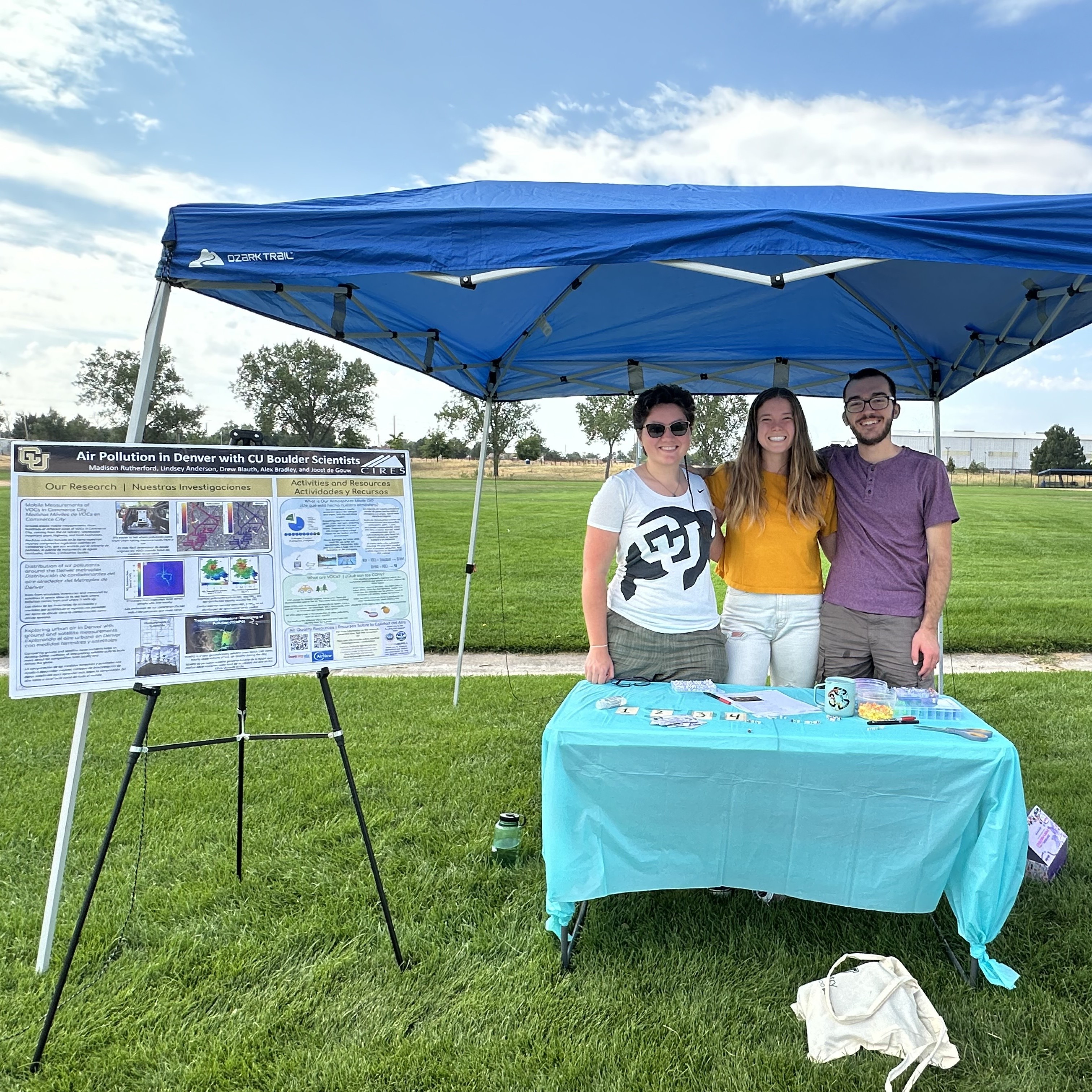
Discussed air qulaity and VOCs in Commerce City with community members.
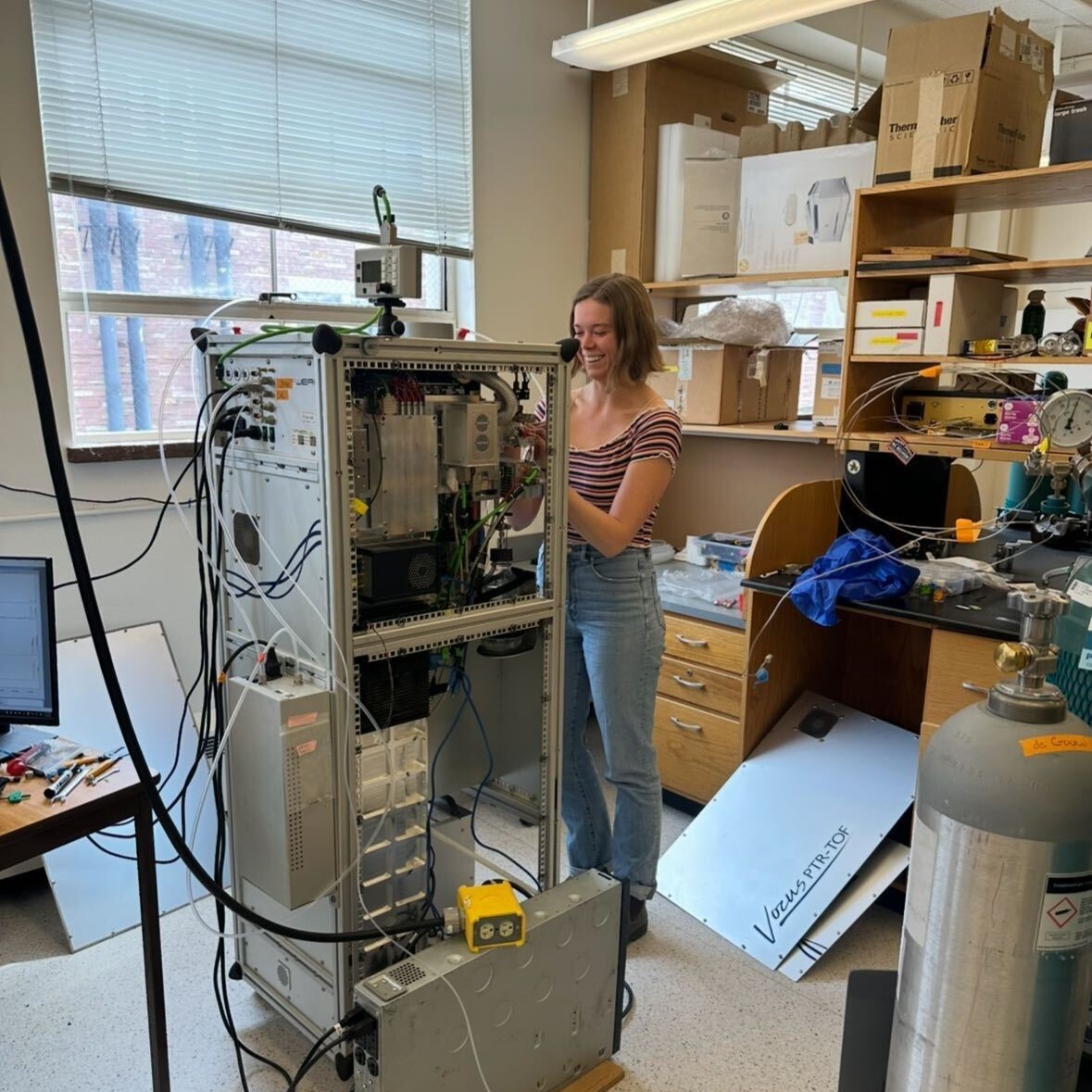
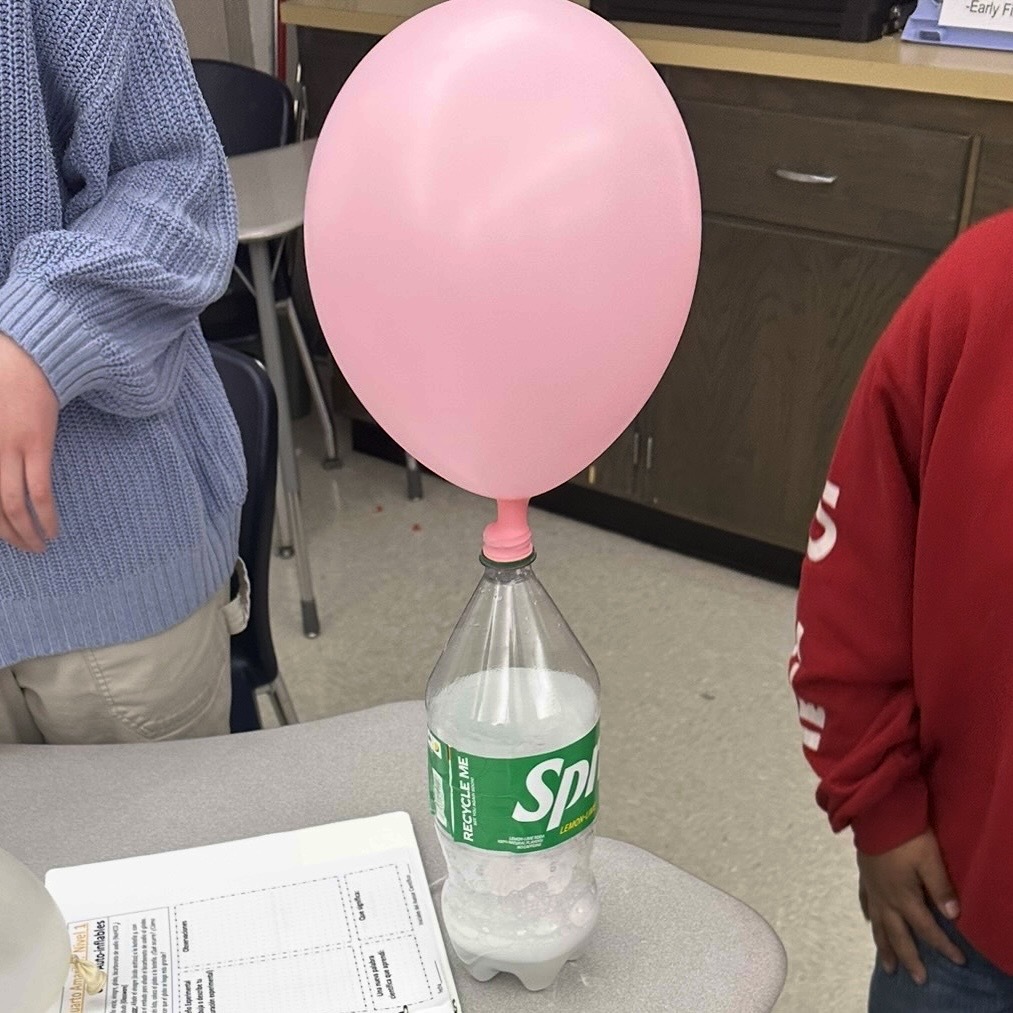
Students exploring how to make balloons inflate with a reaction between baking soda and vinegar during STEM Explorers.

Smoke from Northern California wildifres made the sky turn orange during my senior year in college.

The Marshall Fire burned down more than 1,000 homes in Boulder County.